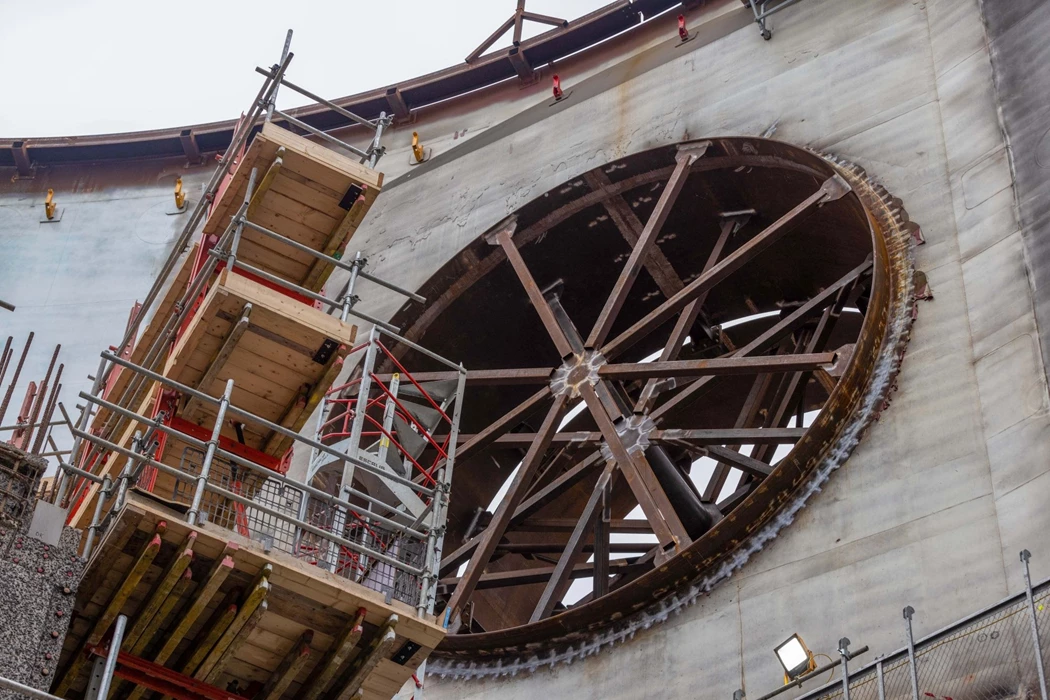Giant Sea Cranes Ready for Heavy Lifting at Hinkley Nuclear Site
(Bloomberg) --
Two miles off the coast of southwest England, a pair of cranes are getting ready to lift a 5,000-ton chunk of civil engineering from a barge and lower it onto the seabed for the Hinkley Point C nuclear power station.
Four times longer and twice as high as a double-decker bus, the intake head will be connected to five miles of tunnels used to circulate cooling water for the station when it starts in June 2027. It will allow water in slowly, reducing the number of fish entering cooling pipes.
A total of four intake heads will be in position by the end of August, when developer Electricite de France SA can breathe a sigh of relief. The marine works are costing more than expected, £500,000 ($598,000) extra, after the initial design didn’t come up to scratch. The total cost of the flagship project was raised by £3 billion in May and now stands at as much as £26 billion.“Marine has been a challenge for us,” Stuart Crooks, managing director for Hinkley Point C, said in an interview at the site in Somerset. “It’s watch-making on an industrial scale.” EDF Asks UK to Trigger Force Majeure in Hinkley Nuclear Contract
The UK government is planning a fleet of new nuclear stations to produce 24 gigawatts of power, providing a stable backup for Britain’s offshore wind generation. Hinkley is the first atomic plant to be built in decades and plans to build more have previously fallen by the wayside. Elsewhere, EDF’s Sizewell C project on the Suffolk coast got planning approval on July 20, a process that took about 10 years. The government will need to speed up to get anywhere near its goal for nuclear output.
As well as the intake heads, Hinkley will incorporate a fish return system, an underwater wheel that catches fish and sends them back to the Bristol Channel. The company is appealing an additional government requirement to have an “acoustic deterrent” to keep the fish away.
Nuclear power plants need a constant flow of water to cool their reactors and turbine systems, which is why many are built near the sea or by rivers.
The Hinkley project is now 56% complete after five years of construction and there are several big milestones coming up, Crooks said. The two reactors will be dispatched from France to arrive in the UK in the first quarter of 2023, and be fitted in place by the end of that year.

The site didn’t escape the record-breaking hot weather that engulfed the UK this month. A fire broke out on the scaffolding for the reactor hall last week and while no damage was done to the structure, work was stopped while the precise cause is investigated, Crooks said. Broader construction work continued even in the worst of the heat, with workers allowed to take more frequent breaks to try to keep cool, said Nigel Cann, delivery director.

The station’s “core catcher” is almost entirely encased in concrete now. That’s a safety feature designed to prevent the kind of disaster that befell Japan’s Fukushima plant in 2011, when reactor buildings flooded, resulting in a nuclear meltdown and radiation being released into the atmosphere. In the event of a new crisis, a computer command would trigger a process to melt the nuclear core, funneling the resultant liquid into a pool where it would be mixed with concrete that would set, preventing an atmospheric release. The reactor would be destroyed but the surrounding area kept safe.
The 3.2 gigawatt plant is scheduled to operate for 60 years but it could be extended by a further 20, Crooks said.
More stories like this are available on bloomberg.com
©2022 Bloomberg L.P.





